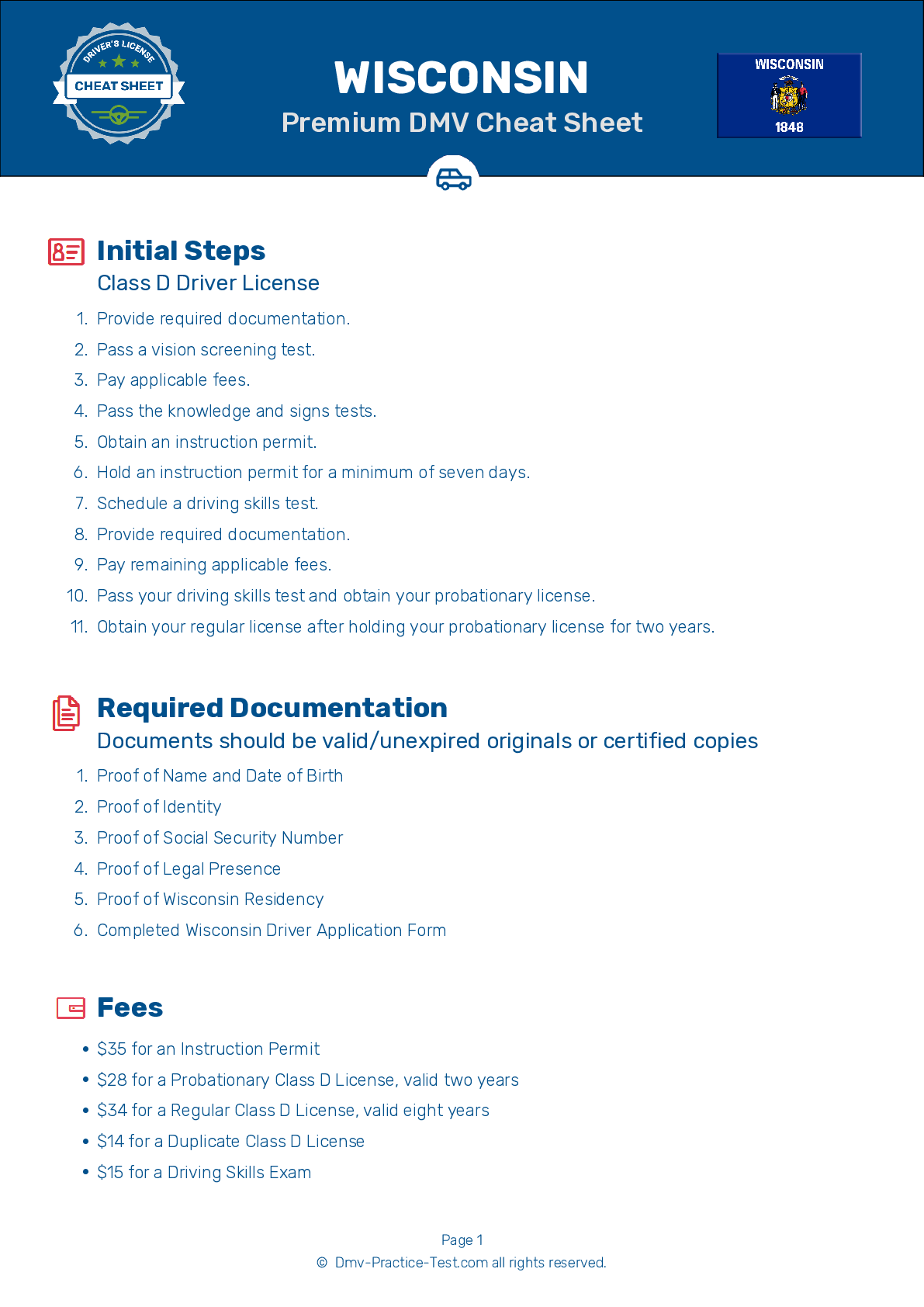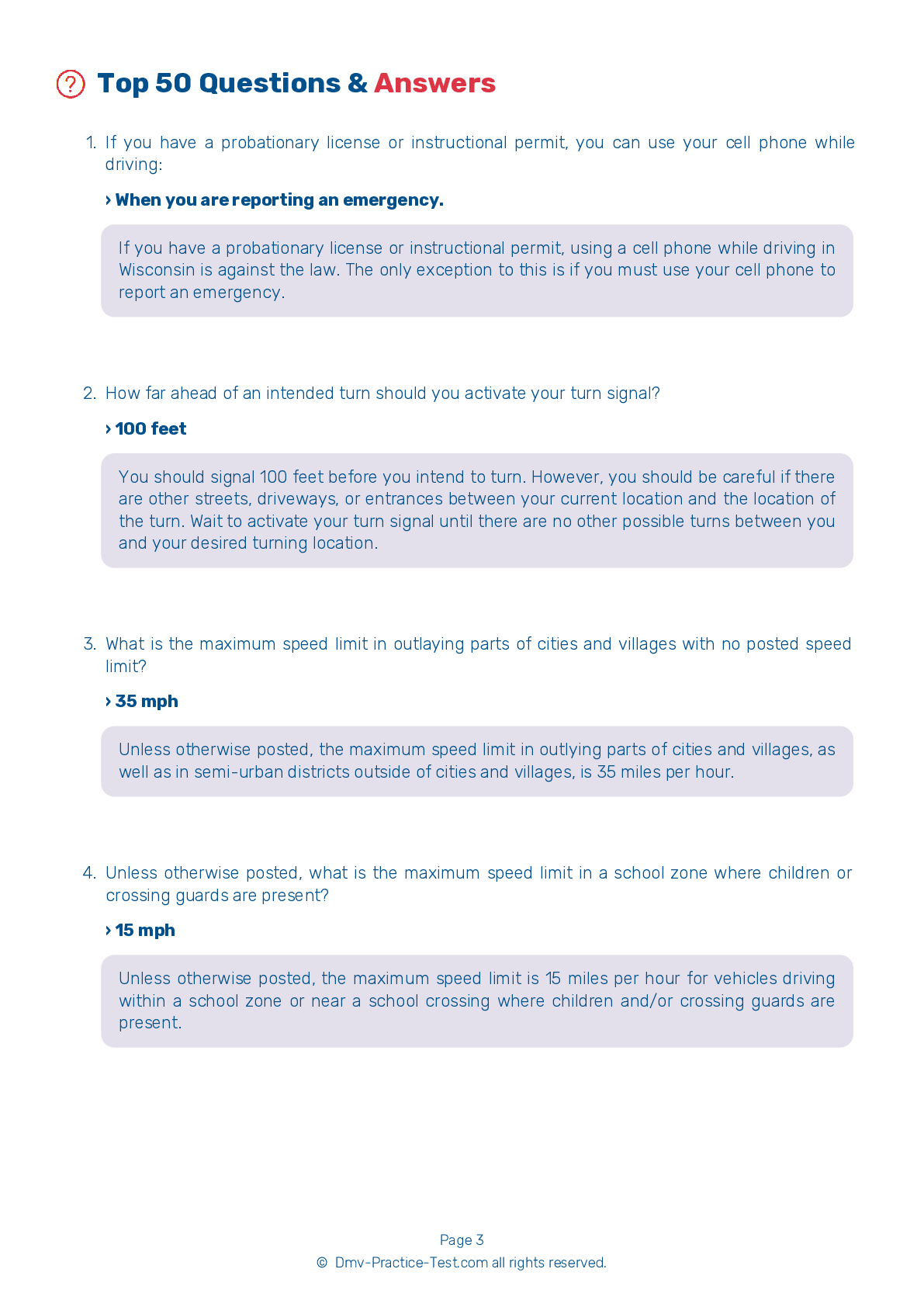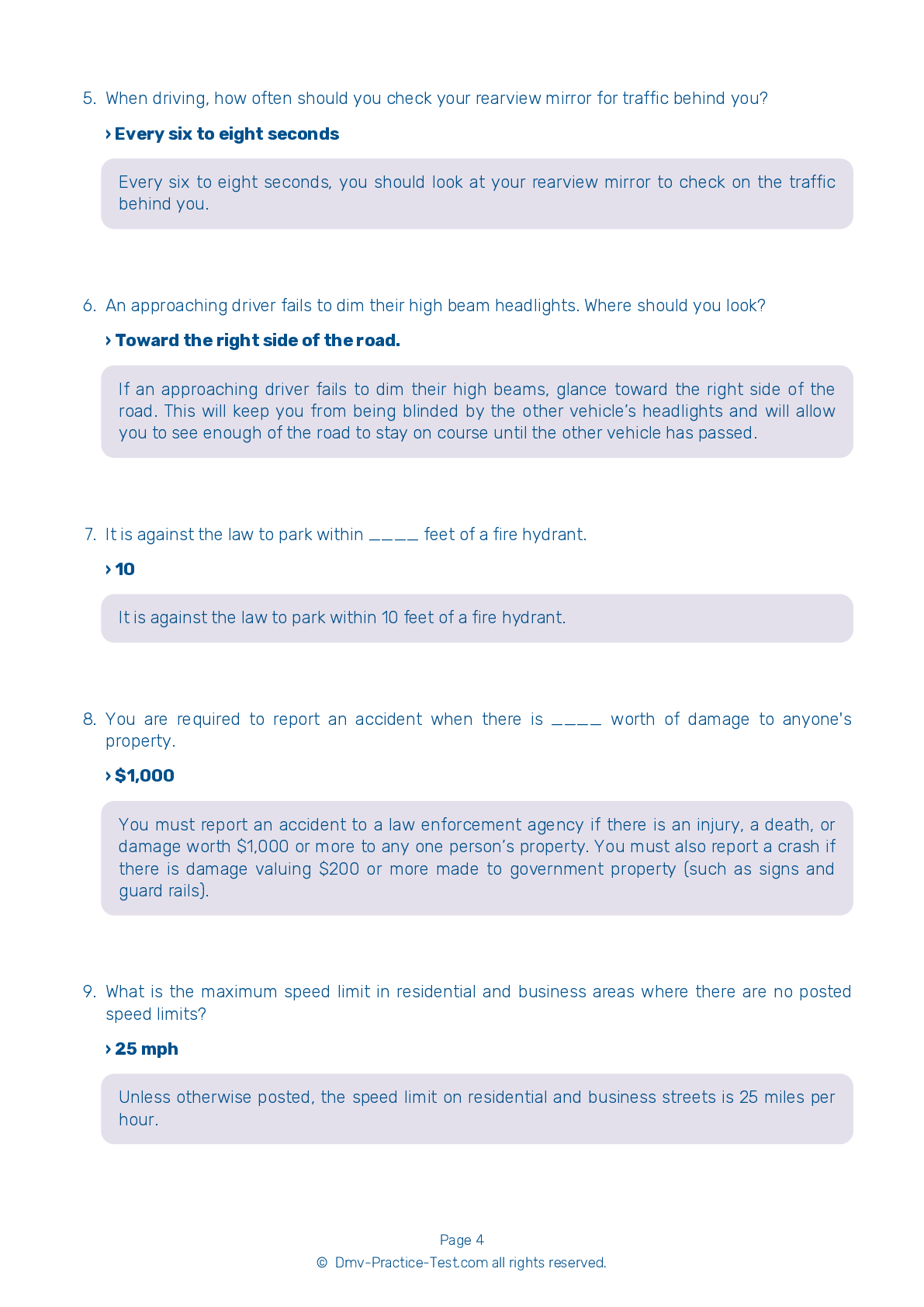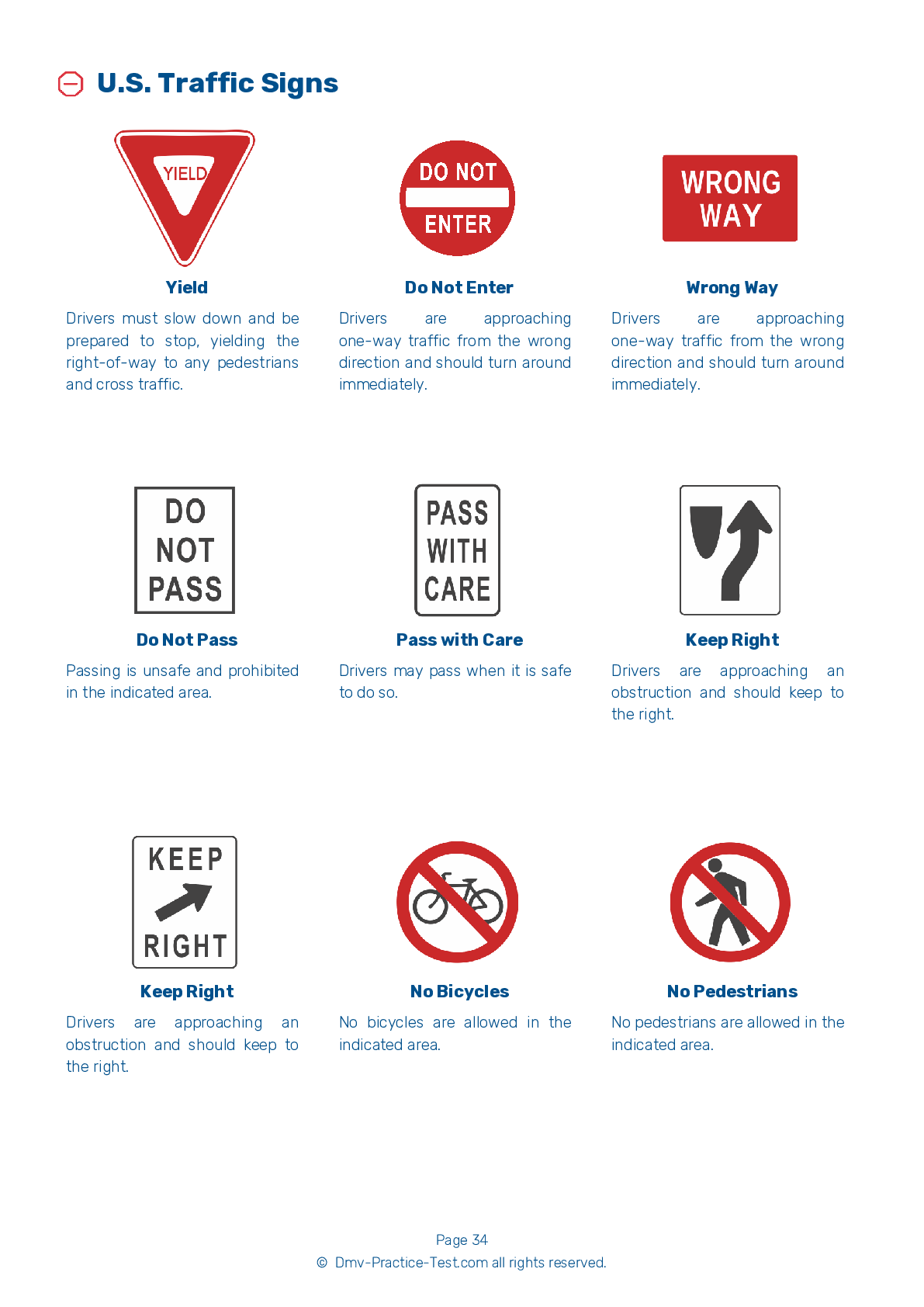FREE Wisconsin DMV Practice Test #14 Page 2 of 7
The Wisconsin DMV practise examinations have been updated for January 2025. It includes questions based on the Wisconsin Driver Handbook's most significant traffic signals and legislation for 2025. Use actual questions that are very similar (often identical!) to the DMV driving permit test and driver's licence exam to study for the DMV driving permit test and driver's licence exam.
On the practise exam, each question gets a tip and explanation to help you remember the concepts. The written component of the official Wisconsin DMV test will include questions about traffic rules, traffic signs, and driving statutes, as well as knowledge from the Driver Handbook.
To obtain a passing grade, you must correctly answer 40 of the 50 questions. Use the practise exam provided by the Wisconsin Department of Motor Vehicles to help you prepare for your instruction permit or driver's licence.
The DMV exam is available in several languages.
Using any kind of testing assistance will result in an automatic fail, and the DMV may take additional action against your driver's licence, so stay away from it.
8 . Seat belts are required to be worn:
Wisconsin law requires that the driver and all passengers wear seat belts while in a moving vehicle.
9 . At an intersection with a yield sign, you:
When approaching a yield sign, drivers must give the right-of-way to traffic already in the lanes that they intend to enter or cross. Drivers should be prepared to stop when approaching a yield sign but may continue without stopping if there is no conflicting traffic.
10 . A red arrow displayed on a traffic light means that:
Unless a posted sign indicates otherwise, a traffic signal displaying a red arrow means that drivers must come to a full stop and remain stopped until a green light or green arrow appears.
11 . A vehicle hydroplanes when the:
When a vehicle is moving too quickly on a wet surface, the tires can lose all contact with the road surface, causing the vehicle to glide along on the surface of the water. This is referred to as "hydroplaning."
12 . You have to report a crash to law enforcement when:
A crash must be reported to law enforcement if it results in any deaths, injuries, or $1,000 or more in property damage (or $200 or more in damage to non-vehicle government property, such as signs or guardrails).
13 . Under ideal driving conditions, the minimum following distance between your vehicle and the vehicle in front of you should be:
Leave at least four seconds worth of space between your vehicle and the vehicle directly ahead of you (under ideal driving conditions).
14 . At night, it is hardest to see:
Compared to signs and other roadside objects, pedestrians are hardest to see at night.
See the exact questions that will be on the 2025 Wisconsin DMV exam.
99.2% of people who use the cheat sheet pass the FIRST TIME
LT gives us an insight on how the cheat sheet provided her with all the study questions she needed before taking her test.
Joe initially studied with the handbook and failed his test, he eventually found us online, studied and pass his test the first time around.



